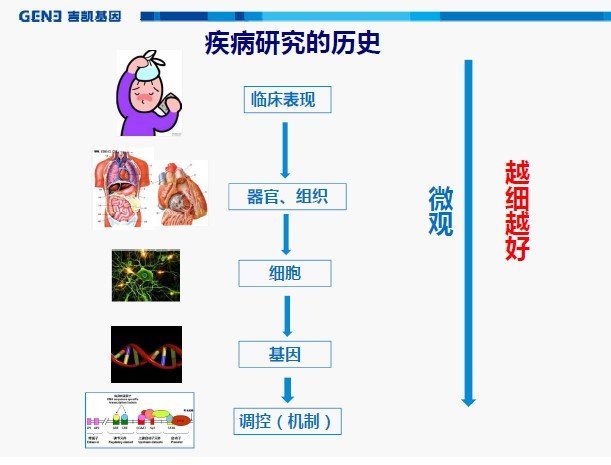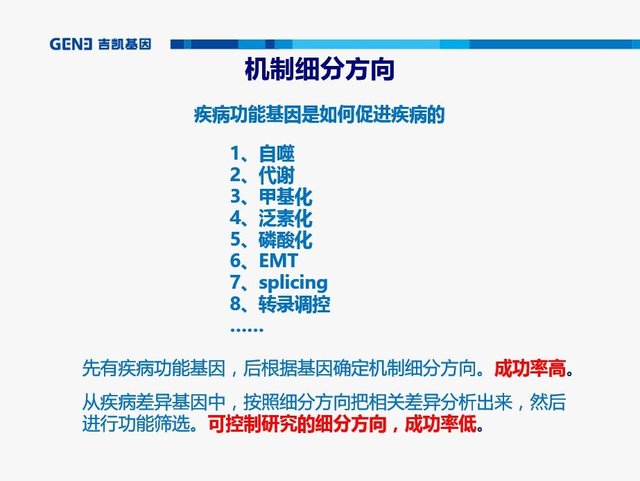Last time, we talked about the innovation of the National Natural Science Foundation. Innovation is the first item in the national natural project evaluation. The second part of the main points of the review is to review the research content, research objectives and key scientific issues to be resolved. This time, let's talk about how the design is designed.

The design of the research content is closely related to the innovation point, and can not be separated from the innovation point. The research content is to carry out experimental design around the innovation point and demonstrate the correctness of the innovation point.
Last time we said that the best innovations in basic research on clinical diseases are genes, new functional genes. In other words, the A gene plays a role in D disease, which was first proposed and demonstrated by me. This time, we take this innovation as an example to explore how the research content of such topics is designed.
Look at the integrity design requirements first. How to assess the integrity of a disease basic research project design. In the field of developmental biology, there is a saying that "a mature individual development process re-enacts the history of evolution of this species." When I think about the first time I saw the development of multiple species in my undergraduate course, it was shocking, in front of the development. The stages, whether human or lizard, are very similar and difficult to distinguish. Whether a basic research topic of a disease is complete or not depends on whether the design of this topic reproduces the history of disease research. Still take out the treasure map.

A total of 5 parts.
Clinical manifestations, this has nothing to do with the experiment, but the first paragraph of the tender, the first paragraph of the article, is to write this. The core is to highlight the importance and clinical significance of the research questions in this project. It is easy to cause high scores for sputum tumors, because the incidence rate is high and the mortality rate is high, especially in clinical practice.
The following four are the four elements of the clinical topic. "A gene affects the D function of C disease by regulating the B signaling pathway." The design of the research content of the clinical basic research topic revolves around these four elements and discusses the relationship between the innovation point A gene and the other three elements BCD.

There are 3 major steps in total. Clinical relevance (AC), function (AD), mechanism (AB).
First, clinical relevance
What is detected here is the difference between the diseased tissue and normal tissue.
1. QPCR detects differences in mRNA levels, and WB and histochemistry detect differences in protein levels. However, one of the advantages of grouping is that you can visually see the cell types and organizational structures that express differences.
2, after the difference, then look at the significance of this difference for the disease. That is, whether this difference is related to the severity of the disease. In the CNS article of cancer research, the general A gene is related to the prognosis of patients.
3. For disease research that does not take human samples, animal models can be used instead. For example, Alzheimer's disease research.
Second, the function
People who do research know that genes with clinically relevant differences are not necessarily functional. Ji Bo's claim is that genes with clinically relevant differences can be shown to be functionally rare. This is the risk of doing research.
How to prove that the A gene I found is functional in the development of C disease. Gene intervention at the cellular and animal levels to detect changes in cell function phenotype, thereby demonstrating whether A gene plays a role in promoting or inhibiting the development of C disease.
There are two core issues to be aware of in this step, models and test indicators. This part, we will break down next time.
In addition, the genetic intervention and the choice of genetic manipulation tools here are still very particular. Kinase inhibitors are preliminary for preliminary experiments. For formal experiments, formal genetic manipulation tools must be used. Gene manipulation tools, Ji Bo is divided into three types, overexpression, RNAi and cas9. This year's Nobel Prize gave me the autophagy. The Nobel Prize in 2006 gave RNAi, so I donated the Nobel Prize to such a technique, because RNAi is aimed at the intracellular endogenous genes. The data is more reliable than the data of the over-expression tool, so the Nobel Prize was given to her. Therefore, we can use RNAi in our research and try our best to use RNAi for our experiments. What about Cas9, although this year gave self-defense, but Zhang Feng is one of the candidates this year. It is estimated that he will have no problem for another 50 years, so in the next 50 years, especially after cas9 plays a major role in the research and treatment of human genetic diseases, it is a matter of time before cas9 takes the Nobel Prize. The choice of good tools can improve the score of the article.
Third, the mechanism
The clinical relevance and function of the A gene determines the life and death of a subject. Determining the depth of a topic is a mechanism.
The path of improvement of scientific research topics given last time, the three major categories of mechanisms. It is classified from the perspective of demonstrating the rigor of inter-molecular relations (for a detailed description, see "Design Ideas"). The Jibo lecture said that the direct interaction mechanism is a requirement of more than 10 points for the rigor of the mechanism. If the article is to be published higher, then it is necessary to look at the direction of the subdivision of the mechanism is the hot spot when the article is submitted.

When doing this PPT, put the first thing in self-sufficiency, not predicting that you will win the Nobel Prize this year. In 13 years, the National Natural Science Foundation of China proposed that the design of the subject should be complete, that is, it needs to include the four elements of ABCD. In the statistics of the 14-year national bidding project, there is a popular term called autophagy. At the beginning of 14 years, there is a need for subdivision in the design mechanism of the subject. This year, it is estimated that there will be more projects related to autophagy. You can quickly see if your gene is associated with autophagy and the B signaling pathway becomes autophagy.
to sum up:
Research content of basic research topics for diseases
1. Clinical relevance study (AC)
2, functional research (AD)
3. Mechanism research (AB)
The innovation of the subject is in the A gene.
The integrity of the subject is in 4 major steps in 4 elements.
The success of the topic lies in clinical relevance and function.
The depth of the subject lies in the rigor of the mechanism.
The heat of the subject lies in the heat of the direction of the mechanism.
PS: I hope that friends who have more exchanges with Jibo in learning and experimentation can pay attention to the "Jikai Gene" WeChat public account and reply to the word "Jibo".

Long press and pay attention
Soy Lecithin Powder,Soya Lecithin Powder,Soybean Powder,Soybean Lecithin Powder
Jiangsu Chenwei Biology and Technology Co. LTD , https://www.cwsoybean.com